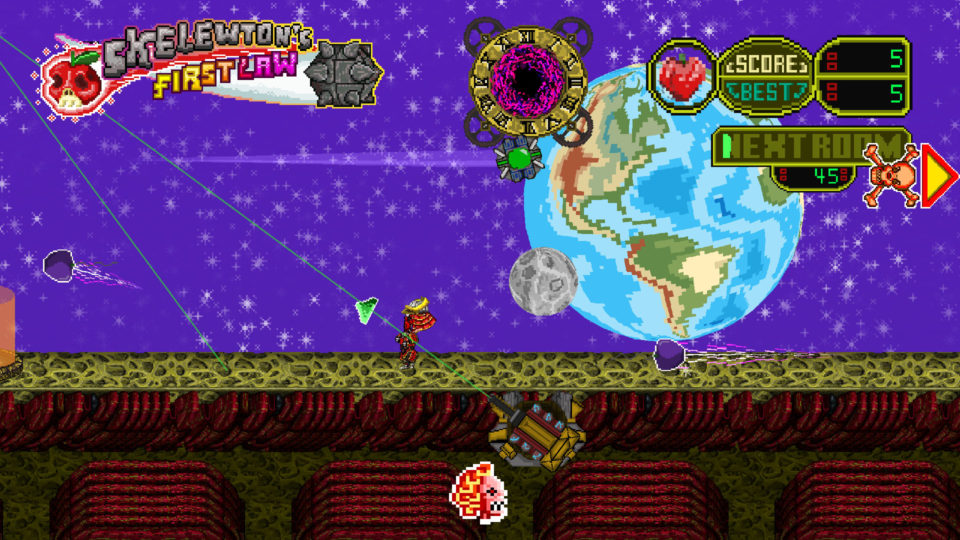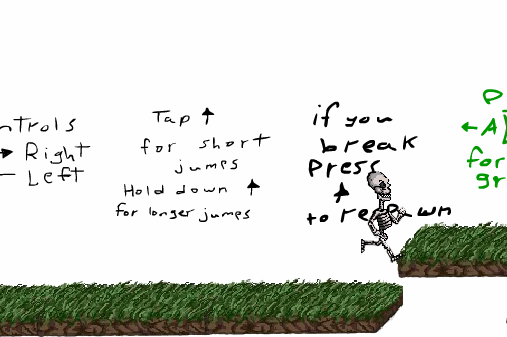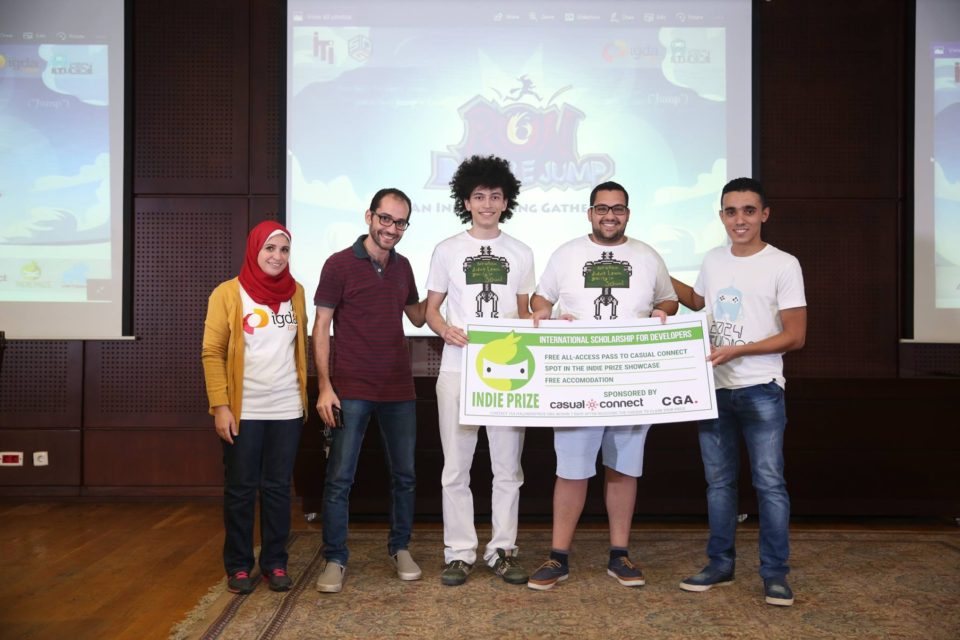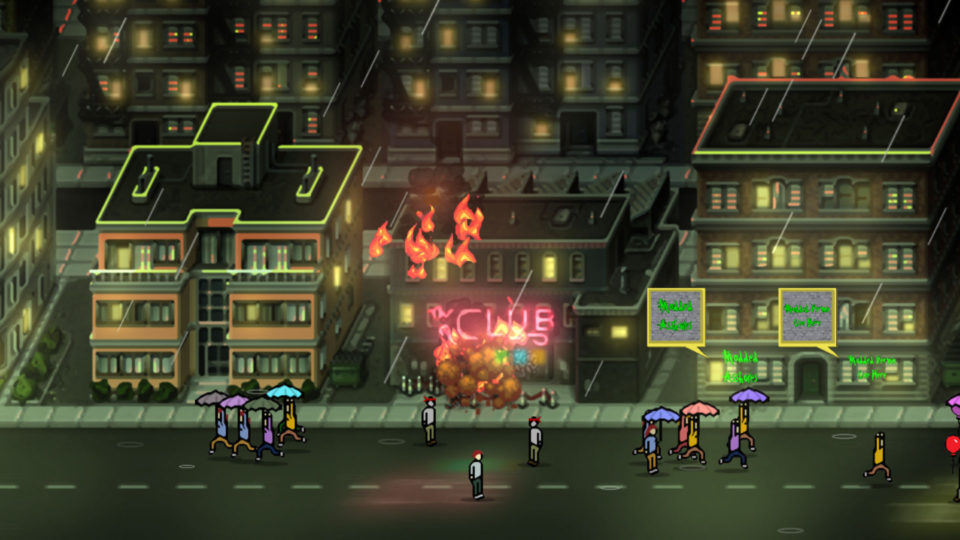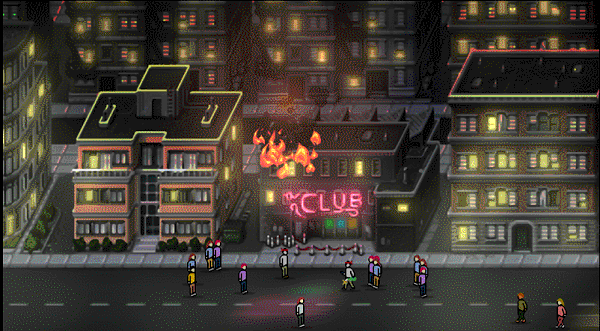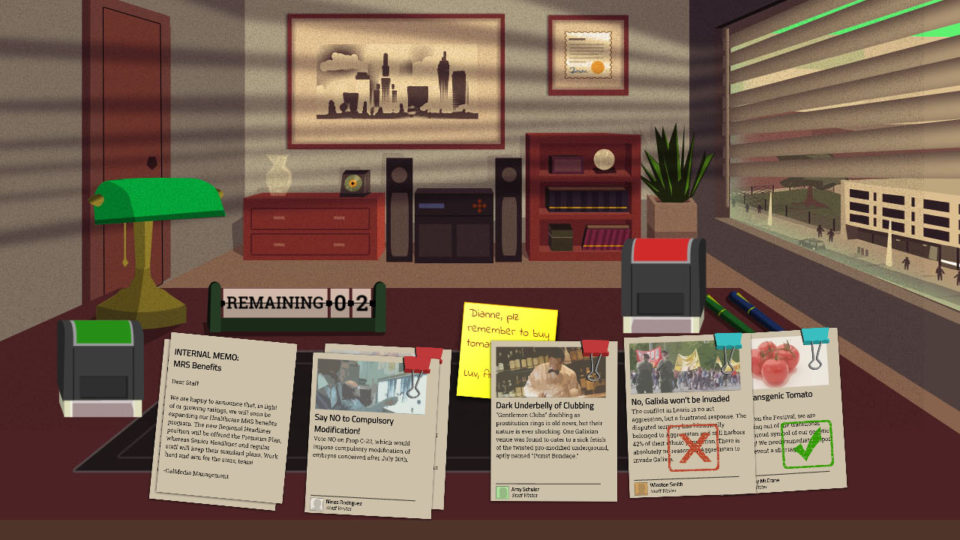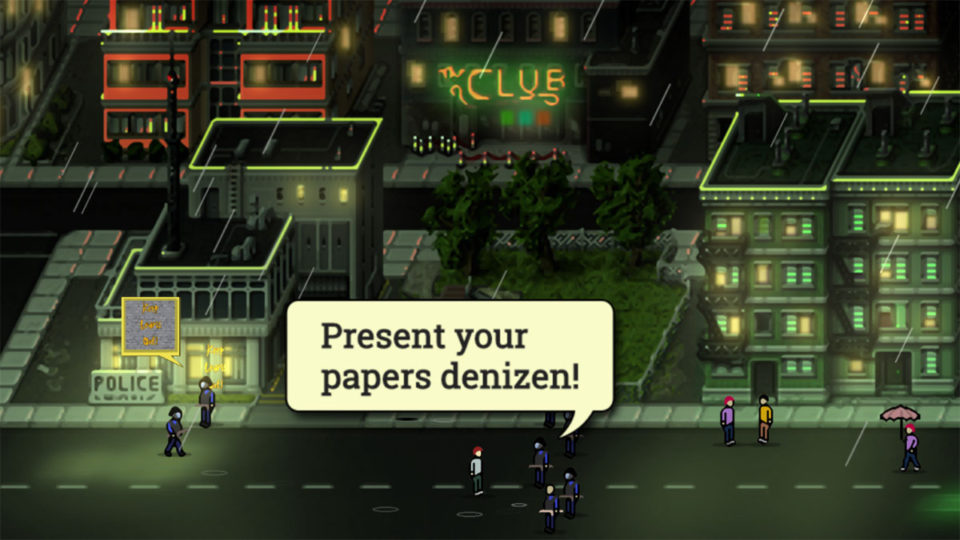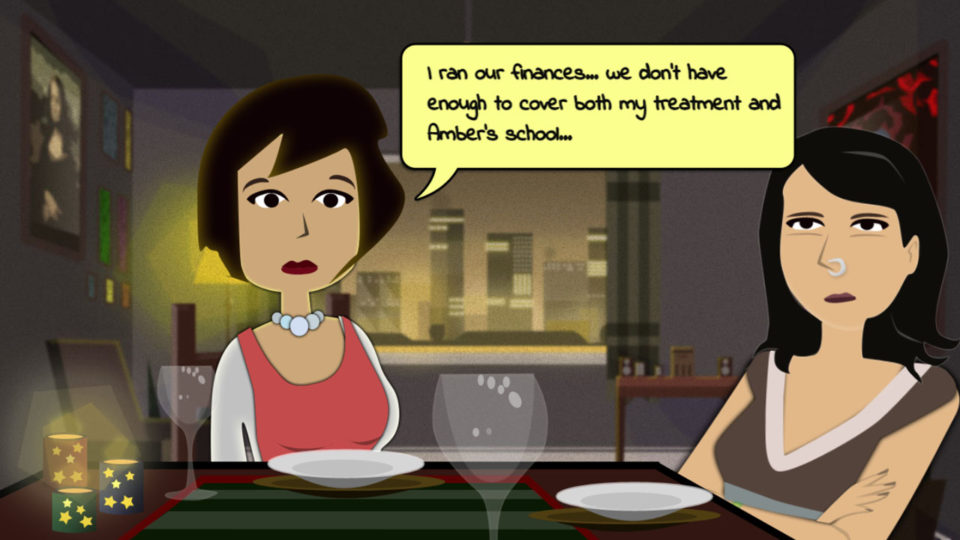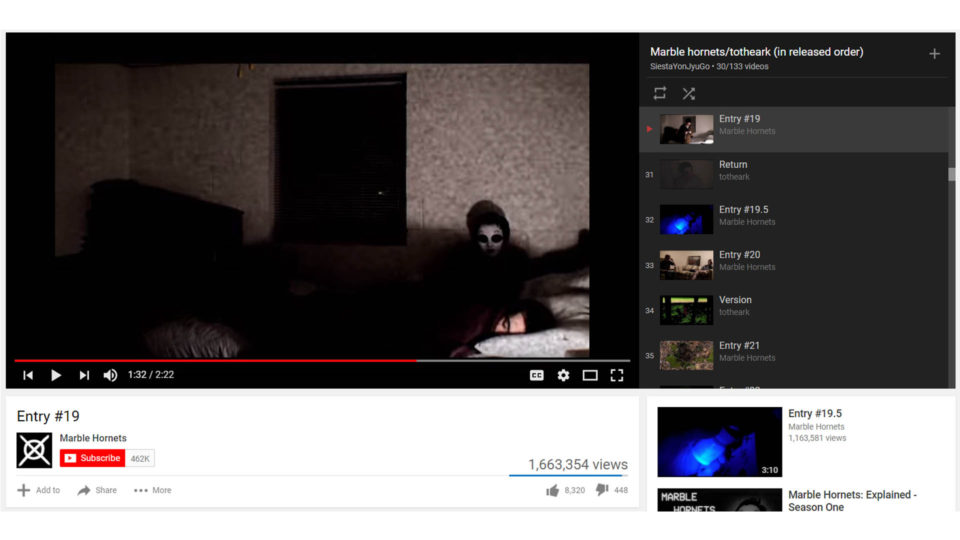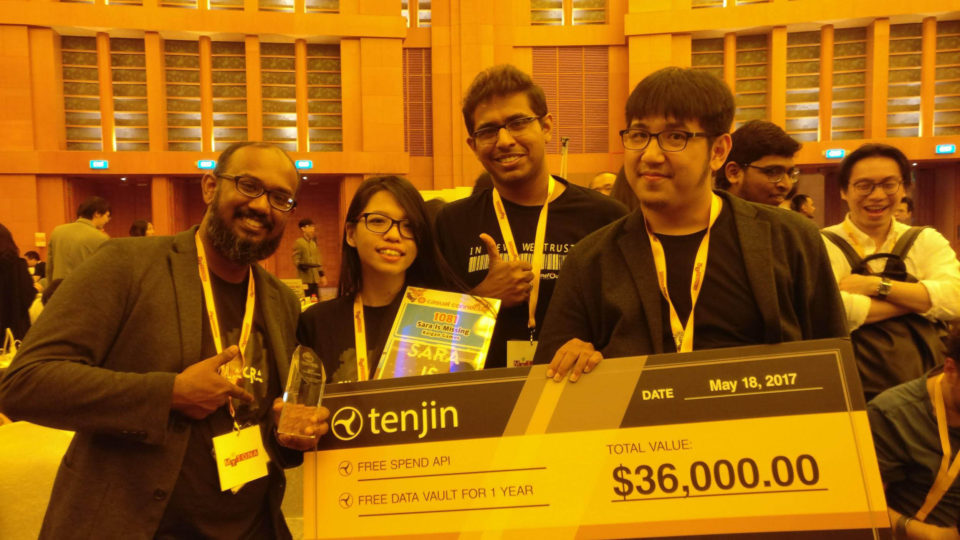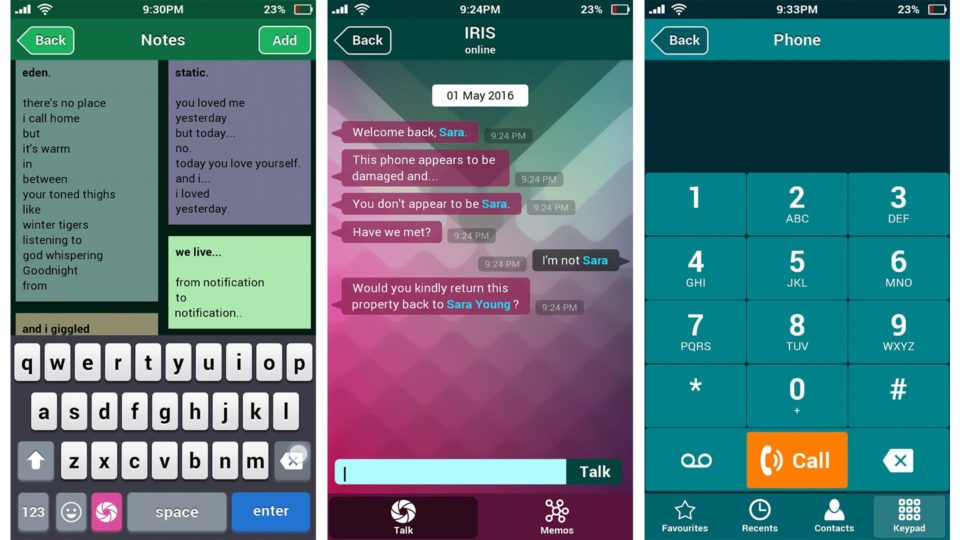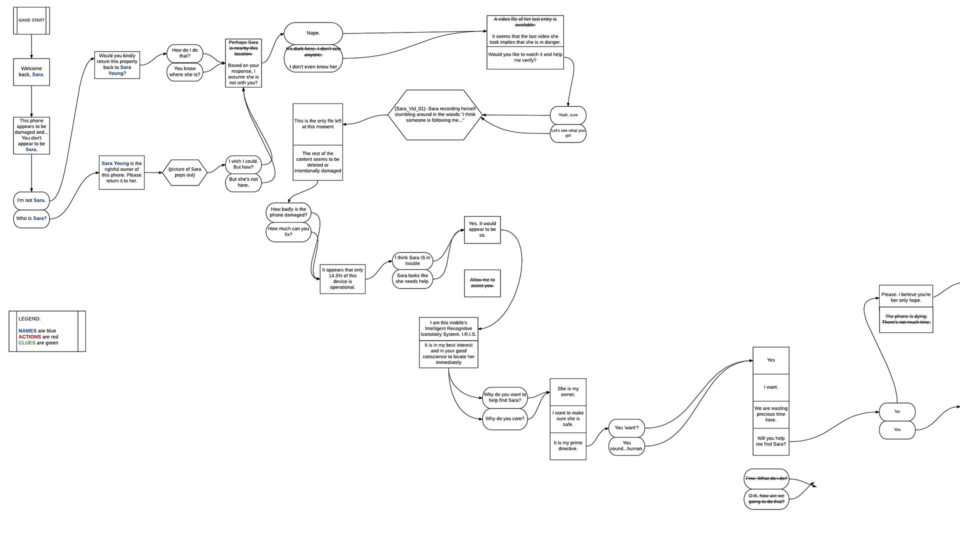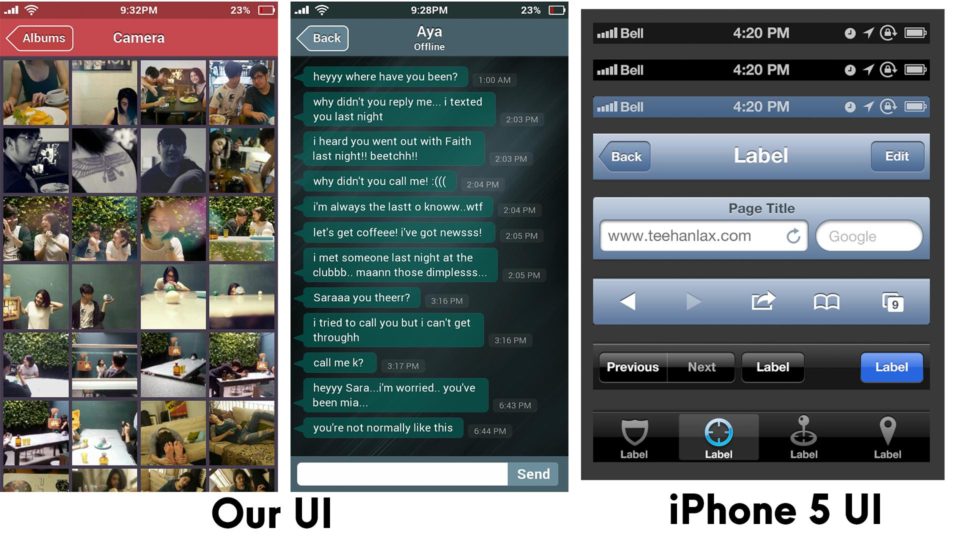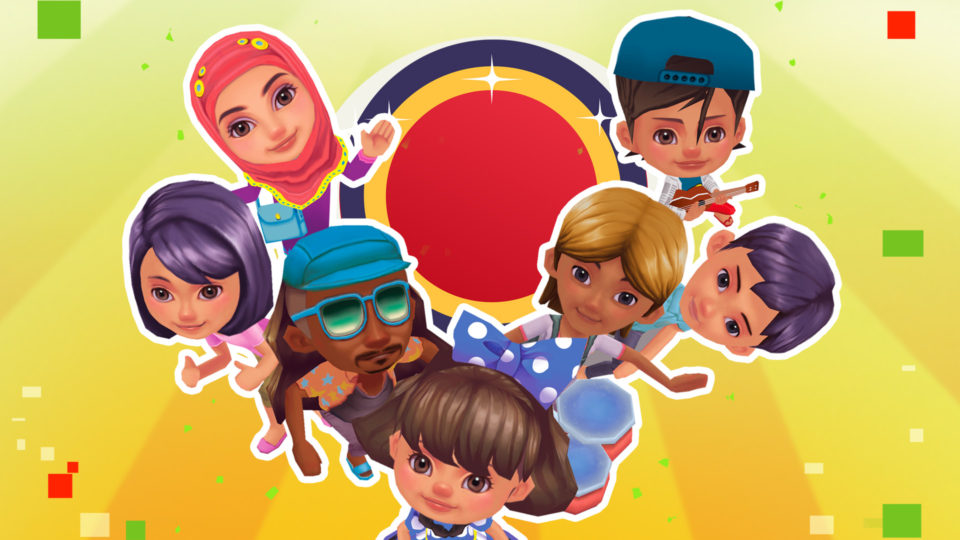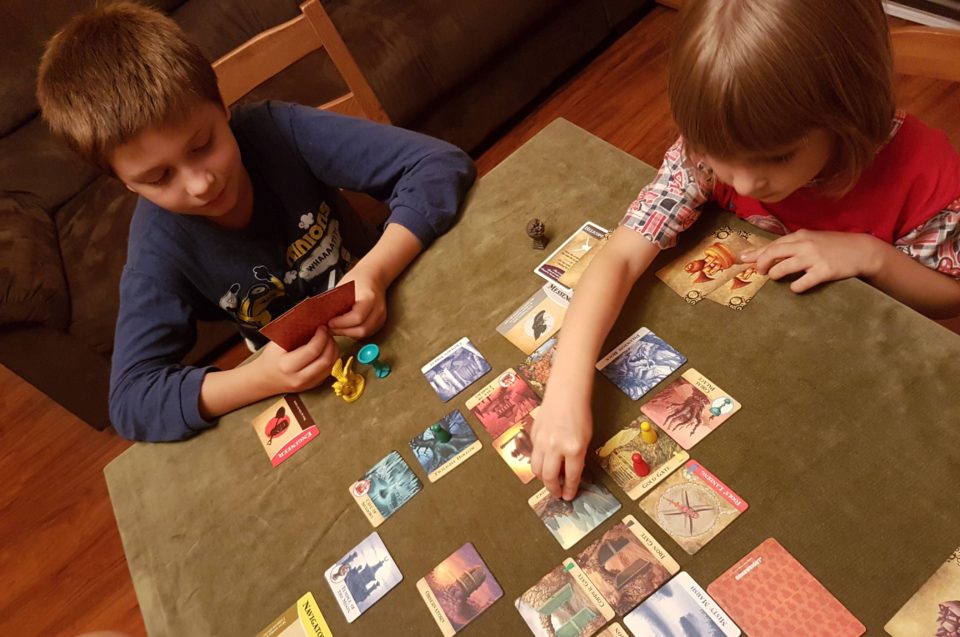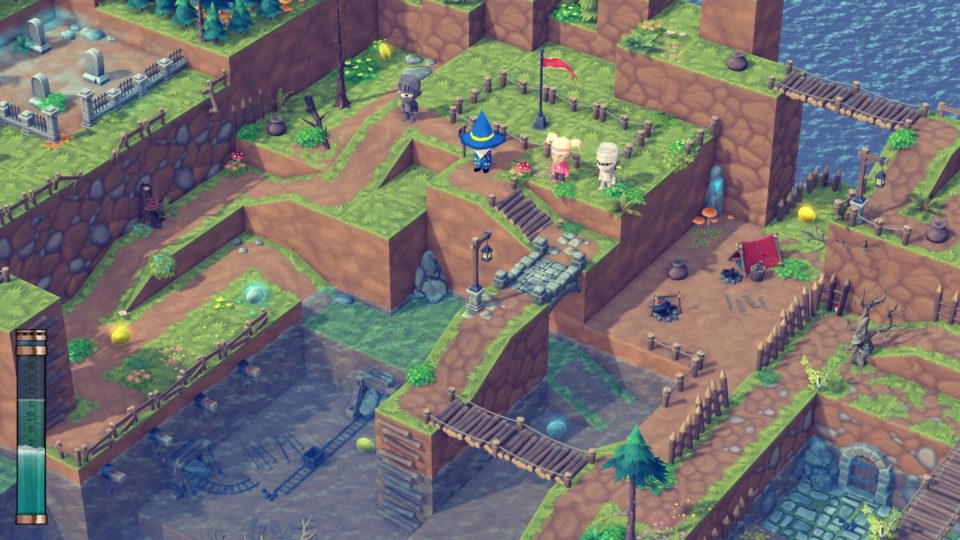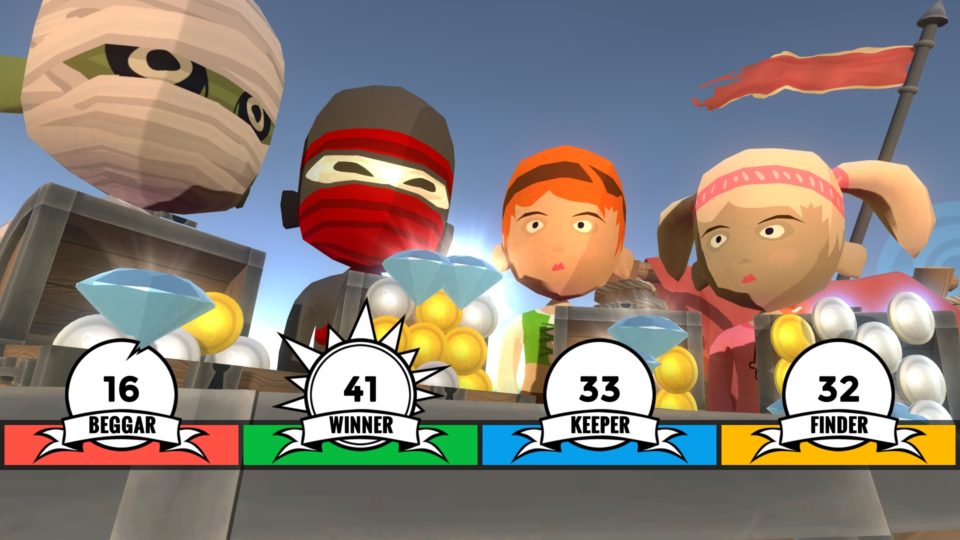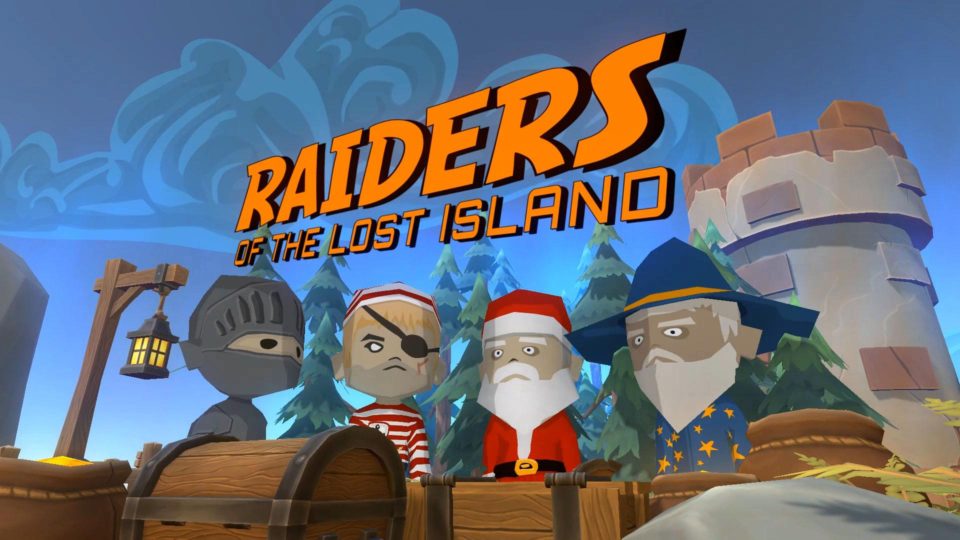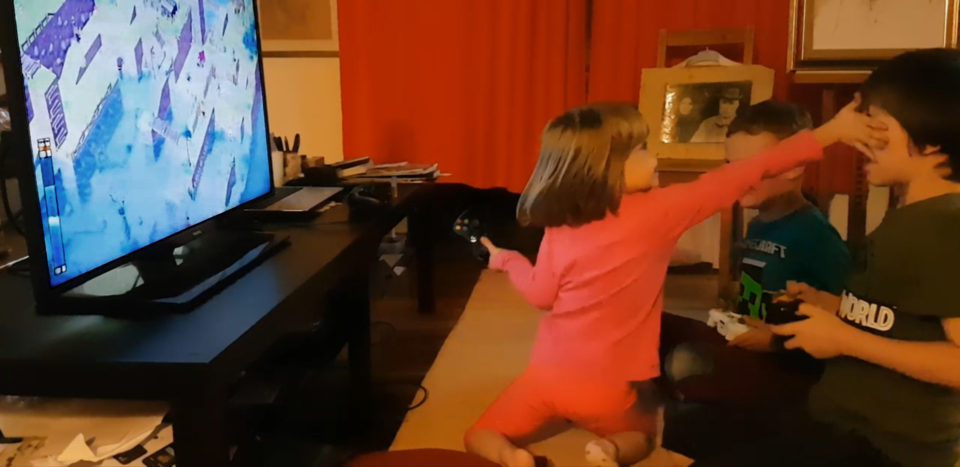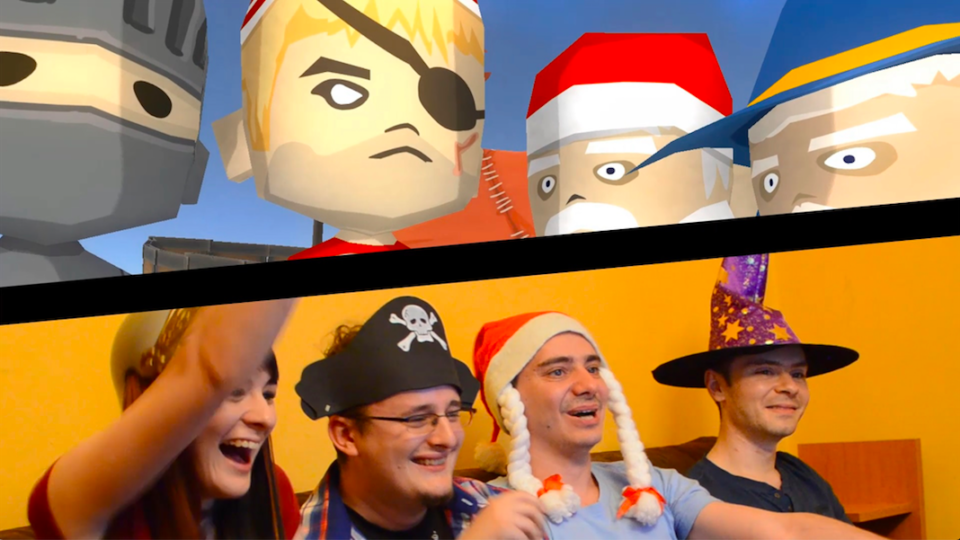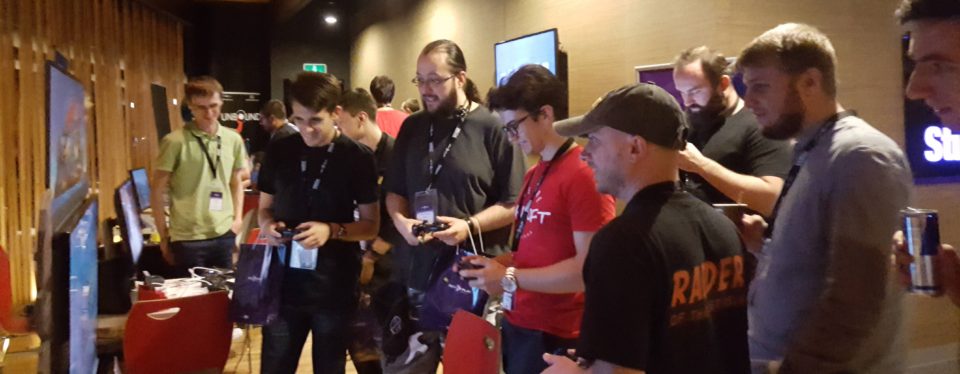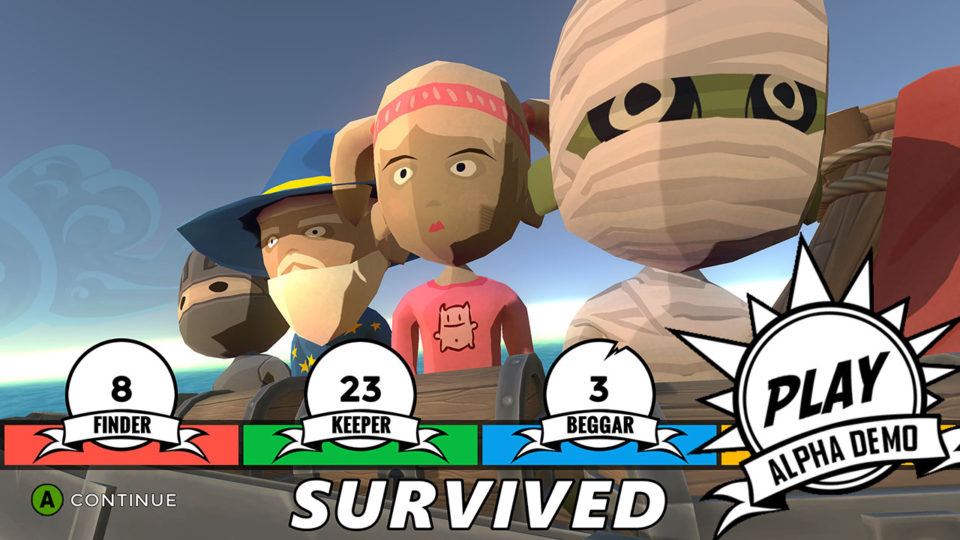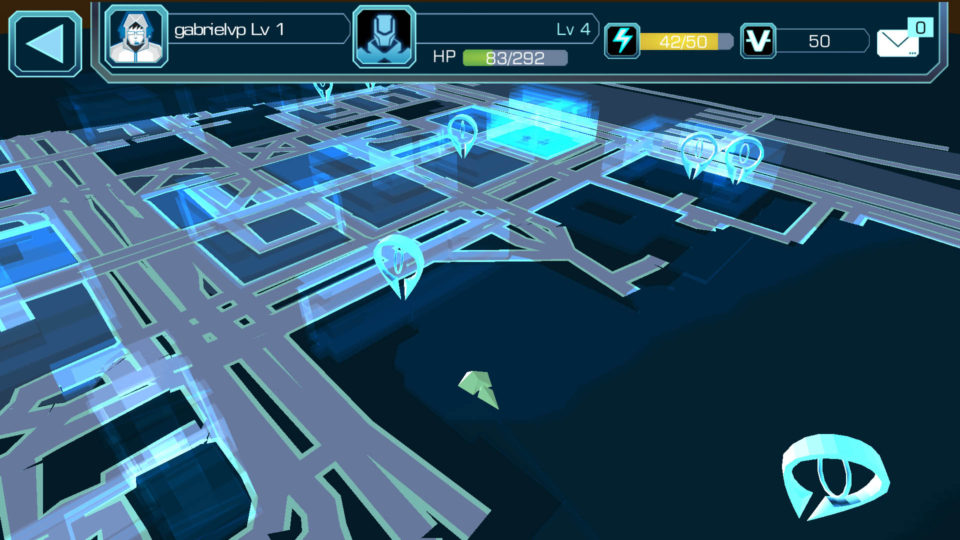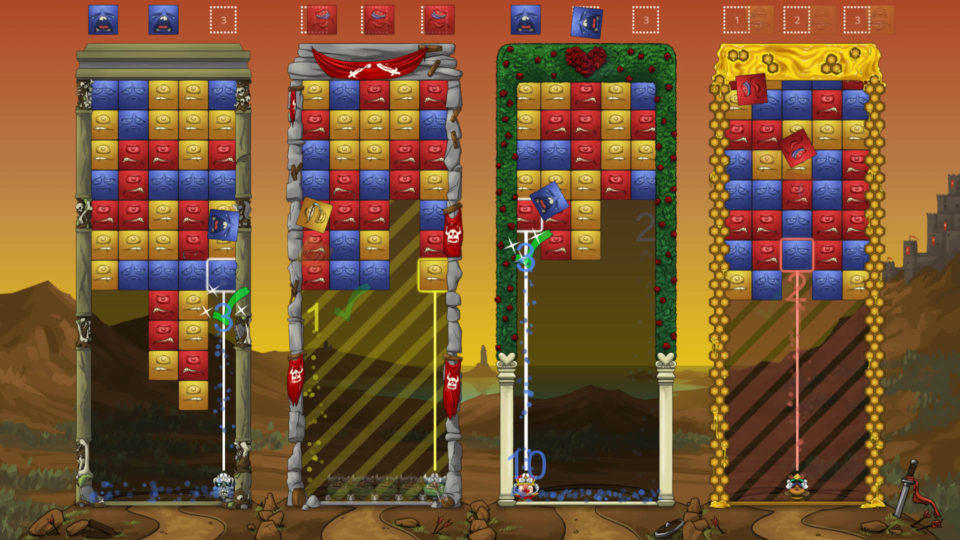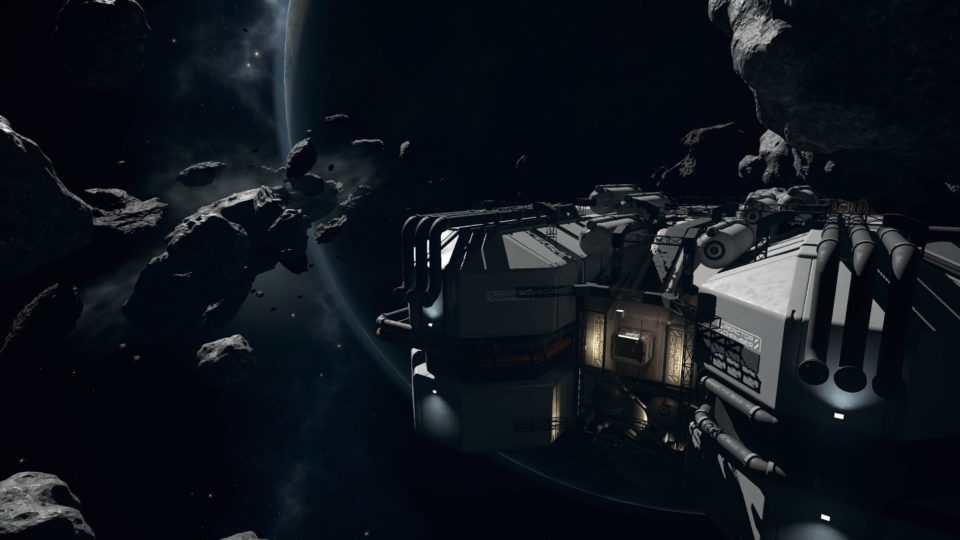Youmaku Games is a small indie game development team, with only three members who are all passionate gamers at heart, based in Egypt. The co-founders of the team, Ashraf Abou-Heikal and Gurin Jaw, two childhood friends, started the company in 2013, having a common goal of creating indie games. The team is currently working on their first game, an endless survival 2D platformer called Skelewton’s First Law, and this is their story of how the game was formed over time. The developers call it a bizarre one.
By Gurin Jaw and Ashraf Abou-Heikal from Youmaku Games
There was first a skeleton…
Our graphics designer, Ashraf, started his journey by practicing pixel art, and one of his early works was a skull. 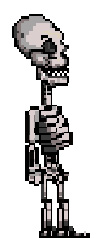
Both of the team members had no experience back then, so this game was more of a learning thing than an actual project. Our developer, Gurin, was creating the game using Adobe Flash Professional. We ended up making the skeleton our protagonist, and started our development, or rather, learning process. After working for months, part-time along with college, the game was something like this:
The iconic typo
Then the most iconic accident in our team’s history happened, Gurin was inspired by one of his favorite games, VVVVVV, and thought of adding a gravity mechanic to the game, but with a twist of letting the skeleton switch gravity between four directions, instead of up/down only (like in VVVVVV).
While Gurin was telling our third team member, Abdelrahman, also known as Beta, about how the game is going, Beta made a typo in the chat, and typed “skelwton” instead of “skeleton,” as the “w” is next to the “e” on the keyboard. That’s when it hit Beta: gravity + apples + skeleton = “Skelewton”, Newton’s skeleton, - and so, our beloved character was born.
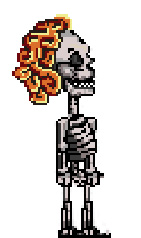
Two years of development in the trash
After two years in development, the game was glitchy, it looked bad, the levels were shallow, and uploading a Flash game to the internet didn’t seem like a bright idea by then.
That’s when we decided to redo the game using a game engine, Unity.
And so, we re-created the physics more efficiently, we made better animations, and things were finally looking neat. We decided to make the game specifically for the mobile platform, and that’s where we didn’t really think it through.
We lacked knowledge of the mobile market, and we didn’t study game design at all.
We were trying to put a 2D side-scrolling level-based game on mobile, where you need to walk, jump and change gravity. That was a very bad idea.
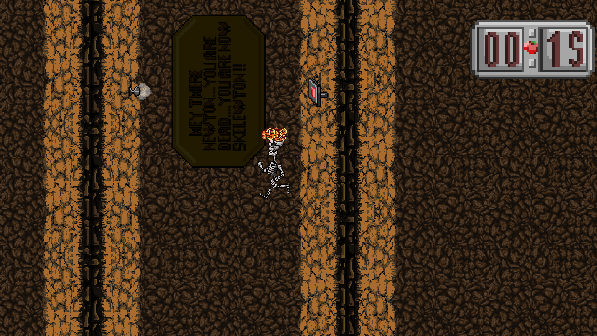
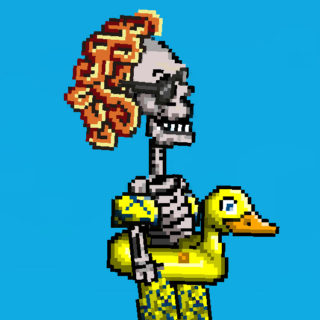
Our control scheme ended up like this: walking by touching the right/left side of the screen, jumping by touching the screen with two fingers at the same time, and you control the gravity with motion controls.
We started attending local gaming events in Egypt, which were very few, to collect feedback from gamers, and that changed a lot of things for the better.
We decided to go for an endless survival approach, rather than a level-based one (that was mainly due to our lack of experience in game design), as well as it was more suitable for the mobile platform. So, we decided that Skelewton should just collect as many apples as he can in each level till he dies.
Later on, Gurin’s little cousins suggested adding costumes to collect for Skelewton, which was indeed a great addition for the game.
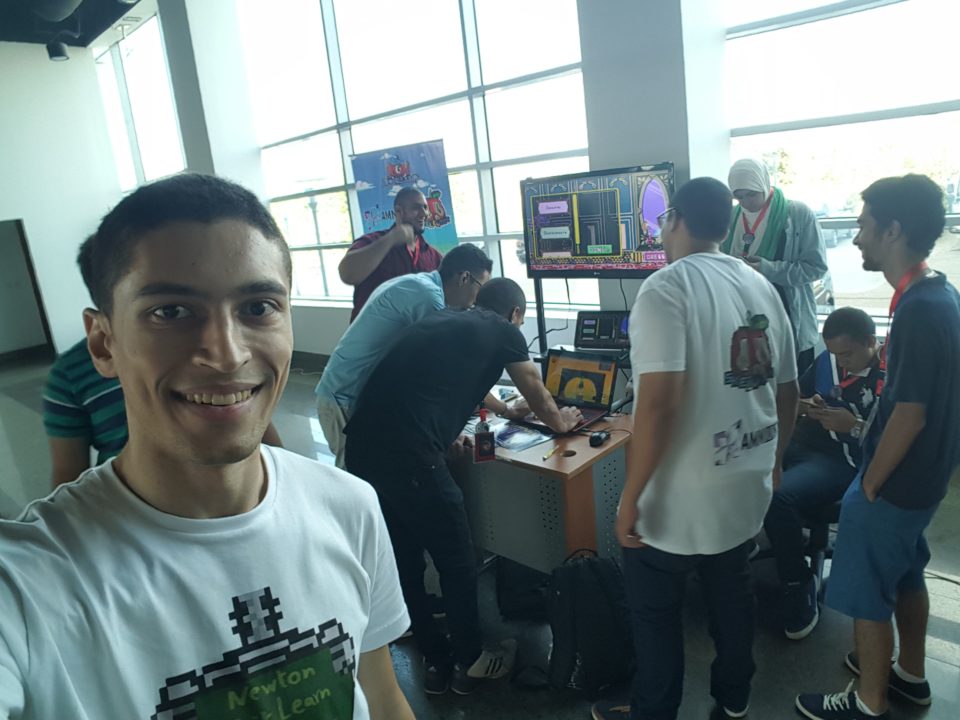
We went to our first local event specifically for game developers. That was, Run Double Jump 2016, and despite it being the show we failed at most, it was also one that benefited us the most.
Gurin didn’t learn from others’ failures, and made one big common mistake: adding new features on the night before the event.
We wanted to get a new decent tutorial for the game ready for the show, but things took a bad turn. We didn’t sleep, the tutorial wasn’t done, and we were running out of time. By the time we reached the event, the game was literally broken, nothing was functioning correctly.
Surprisingly, despite the game being broken, people genuinely loved it, and gave us a lot of great feedback! Furthermore, we got to meet up with the country’s best developers and got to know many amazing people working in the industry.
Not ready? attend events anyway!
During Run Double Jump 2016, we found out about Indie Prize and Casual Connect as well. And decided to submit Skelewton’s First Law for Indie Prize Berlin 2017, despite being far from complete.
We got rejected as expected, but Gurin decided to apply as a volunteer, which would give us a free pass for the event, in exchange for helping out at the event for a day. Thankfully, Gurin got accepted as a volunteer and was able to attend.
At the show Gurin met countless professionals in the gaming industry, and got to know some wonderful people who were all willing to help and give feedback. On the first day, while volunteering, Gurin met some amazing game developers who were part of the volunteers team as well, and they gave a lot of valuable comments.
Special thanks to two teams, Traptics and Amused Sloth, for all their great help and support, they were truly kind and helpful!
Gurin also got to spend some great time with Egypt’s RDJ 2016 winner, Abdallah AlSayed from BNOO Games.
Three days at the event were far from enough to try out every single game showcased at Indie Prize, but it was the most amazing experience ever.
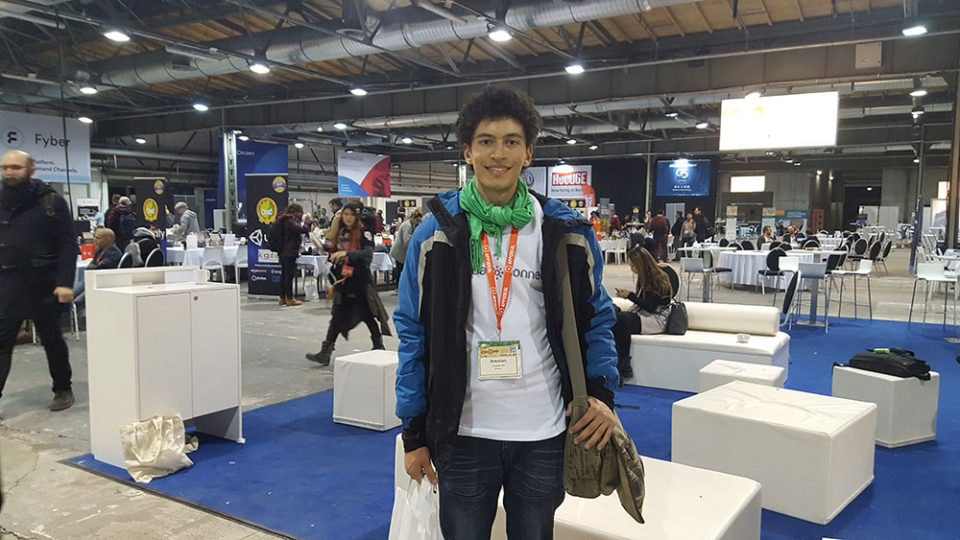
After that we attended a local event, Geek Fictions 2017, where we were invited to showcase our game along with other developers we know from across the country.
At this event, we saw how great the changes in gameplay improved the game. All feedback we received was positive and people were telling us we are in the right direction.
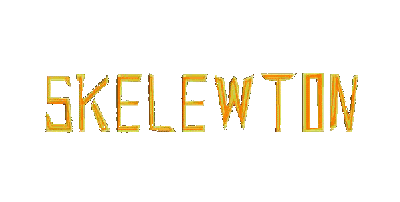
When the RDJ 2017 date was announced, we knew this will be a decisive factor for the future of the game. We worked every day the entire summer with no breaks at all until the day of the event, as if our lives depended on it, because they really did.
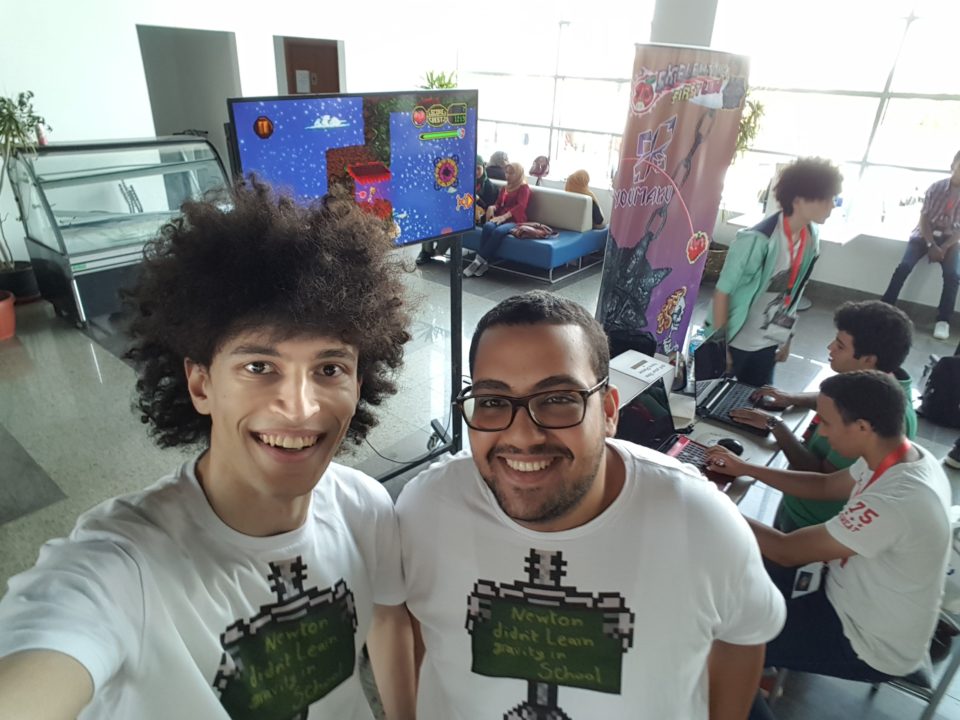
The day had come, and it was the best experience in our entire lives, we were genuinely surprised by how much people enjoyed the game and wanted to play again; this was when we felt the true joy of making a game that makes people happy.
What made that day even better was that all our friends and family were able to make it to the event.
We met some amazing game developers again, as well as hard-working, passionate people eager to learn game development.
The day was coming to an end, it was time to announce the winners, and we really didn’t see it coming, because it was a dream coming true: Skelewton making it to Indie Prize.
“Now, we are aiming to finish the game during Q1 2018 and are preparing for Indie Prize USA 2018. We hope to find a publisher for our game. While we don’t know whether the game will be a success or a failure, we agree that spending 4 years on a first game has to be the greatest learning experience ever”.

